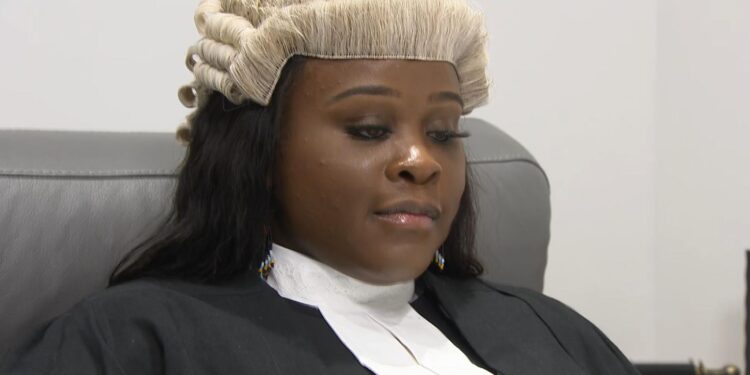The barrister Jon Holbrook has written an excellent piece for the Critic questioning the rationale behind the Bar Standards Board proposed rule change which would impose a duty on barristers to “advance equality, diversity and inclusion”. The BSB says it wants to bring about “demographic change in the profession”, but in fact it’s already extremely diverse, as Jon points out.
In 2021 a BSB ‘think-piece’ written by its board member Leslie Thomas KC foreshadowed this proposal. He argued that a lack of action on the Bar’s demography will add “truth and weight to the view, held by many, that the profession is “White, stale and male, antiquated, exclusionary, isolating, and a place where prejudices not only exist but, in my view thrive”.
These are strong words and suggest that the Bar, a profession of about 18,000 practising and mostly self-employed barristers, is dominated by elderly white men who spend their days lamenting the demise of Victorian values. Fortunately, the BSB’s own facts don’t support Thomas’s characterisation.
For a start, there was 16.9% of black and minority ethnic (BME) barristers at the Bar was in December 2023. Comparisons with the “norm” are tricky but in much of its data the BSB treats the working age population of England and Wales as an appropriate norm. On this basis BME barristers are slightly over-represented at the bar, since BME individuals comprise only 16.7% of the norm. Also, when it comes to the direction of travel the BSB notes that the per centage of BME barristers has increased by 0.5% each year since its first Diversity at the Bar Report in 2015. As for BME pupils (trainee barristers) — who indicate what the future Bar may look like — they comprise a disproportionately high 24.9%.
Women also fare well in the profession despite Thomas’s view that it’s a place where prejudices thrive. In December 2023 they comprised 41 per cent of the Bar, so less than the norm of 50%. But why, and does it matter? BSB data for 2023 shows that women are over-represented as pupils (60%) but that their per centage falls with seniority. This is hardly surprising since women who remain in practice are nearly twice as likely as men (41 vs 23%) to have primary caring responsibility for children. So, this disparity, far from being a product of prejudice, is a consequence of decisions made by free-thinking men and women about how to arrange their family and professional lives.
Norms regarding sexuality may be unreliable since when asked this question nearly 42% of barristers declined to say, no doubt because, as with much of the BSB’s monitoring, they consider it none of the BSB’s business. Nevertheless, on the basis of those the BSB does know about, it concludes that the LGBTQ community is 12.6% of pupils, 7.2% of junior barristers and 5.3% of senior barristers (Kings counsel, KC). This the BSB says “compares to an estimate of 4.0% of the UK population aged 16 and over”. So the Bar seems to have a disproportionately high number of those who are LGBTQ. One can only marvel at their persistence in the face of a profession that Thomas described as “antiquated, exclusionary and isolating”.
The BSB’s rationale for seeking demographic change in the profession is that it “must ensure” — words that highlight its campaigning zeal — “that the profession is truly representative of those it serves”. But how “truly representative”? The Bar serves a disproportionately high number of criminals, divorcees and illegal migrants. Yet the BSB is presumably not going to gird its loins to increase representation of these groups at the expense of the law-abiding and happily married who didn’t arrive on small boats.
Worth reading in full.











To join in with the discussion please make a donation to The Daily Sceptic.
Profanity and abuse will be removed and may lead to a permanent ban.
I guess it takes just a handful of influential zealots, to set the direction of travel for the BSB. But the facts listed above, suggest there is scope for pushback. And I think that reasonable people are more willing to push back at the moment.
impose a duty on barristers to “advance equality, diversity and inclusion”
This is the ideological framework of anti-whitism
The BSB says it wants to bring about “demographic change in the profession”
Proving that the purpose of anti-whitism is The Great Replacement.
I think it would provably be more correct to say they have a “standards problem” given the marking and assessment gymnastics undoubtedly required to achieve such a presence.
https://youtu.be/IkattwbDwho?si=KGwipfN5f4eVQLR6
Just seen this.
Blackbelt Barrister on YouTube discussing the Connie Shaw Leeds University Radio case.
I have to say this young chap is doing some superlative work and has really flagged up the Free Speech Union in this short video. He positively urges people to sign up. Anyway he will be receiving a subscription from me later.
This case BTW is a travesty. Video only seven minutes and really punchy so worth a look.
There are no illusions as to Blackbelt Barrister’s political views either despite his avowed neutrality.
Let’s get his subs up to One Million.
Constance Briscoe was a great advert, wasn’t she?
Thanks for that interesting snippet. I hadn’t heard of her before, but after looking her up, I see that your comment was spot on.
“Why Does the Bar Standards Board Think the Law has a Diversity Problem, Given That 16.9% of Barristers are BME?”
Because they won’t be satisfied until it’s 100%.
Our institutions have been colonised by society-destructive Marxists who score high on the psychopath scale.
What is needed is a quick march through the institutions scouring out the crud. For that we need a complete change of political leadership – eg Trump-like, and the nearest we have to that so far is the Blessed Nigel of Farage and Reform UK.
Great photo, showing the Smug Face of Third World Entitlement to everything the White Man worked so hard to build.
Amazing that a KC suggests ‘a lack of action on the Bar’s demography will add “truth and weight to the view, held by many, that the profession is “White, stale and male [add usual tropes]’. The issue surely is if “the view” has any weight when judged by the objective evidence? For the reasons given above, any such “view” is little more than feelz.
More fundamentally, the BSB proposal is a grotesque overreach: it seeks to extend an already extreme view of the pernicious “public sector equality duty” to private individuals (barristers), and for that ideology to be enforced against them by their professional regulator, which has power of professional life and death over them. The opportunity for vendettas against any barrister not conforming to the authoritarian worldview of the Starmer regime is obvious and cannot be controlled, as the BSB would be the prosecutor, judge, jury and executioner.
I understand that, amazingly, the Bar Council (an outfit largely composed of white men wracked with guilt) has opposed this: perhaps it realised that if it supported it, there might be a regime change at the next Bar Council elections.